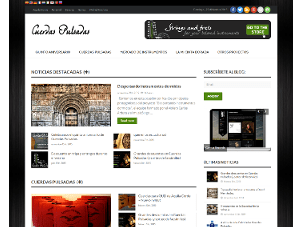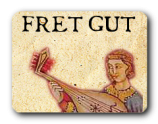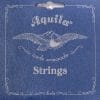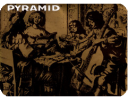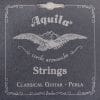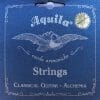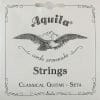Currently, the study of the basso continuo is greatly hampered by the scarce material published for purely didactic purposes. Of the few existing methods, none really effectively combines the theoretical and practical part of performing accompaniment.
On the one hand, the modern compendia that include the theory of the most important treaties of the time, although quite complete, are difficult to access, very expensive and in foreign languages; serving more as advanced consultation than progressive and organized learning.
On the other hand, modern methods that opt for exercises and practical instructions are extremely limited and alarmingly incomplete and disorganized.
Finally, the original treaties are even more deficient than the modern revisions.
With the double objective of completing this subject in addition to amplifying his study towards other disciplines, Pablo Zapico has completed more than six years teaching a intensive basso continuo course made by himself that helps to plan and understand his teaching method in a few hours. < / strong>
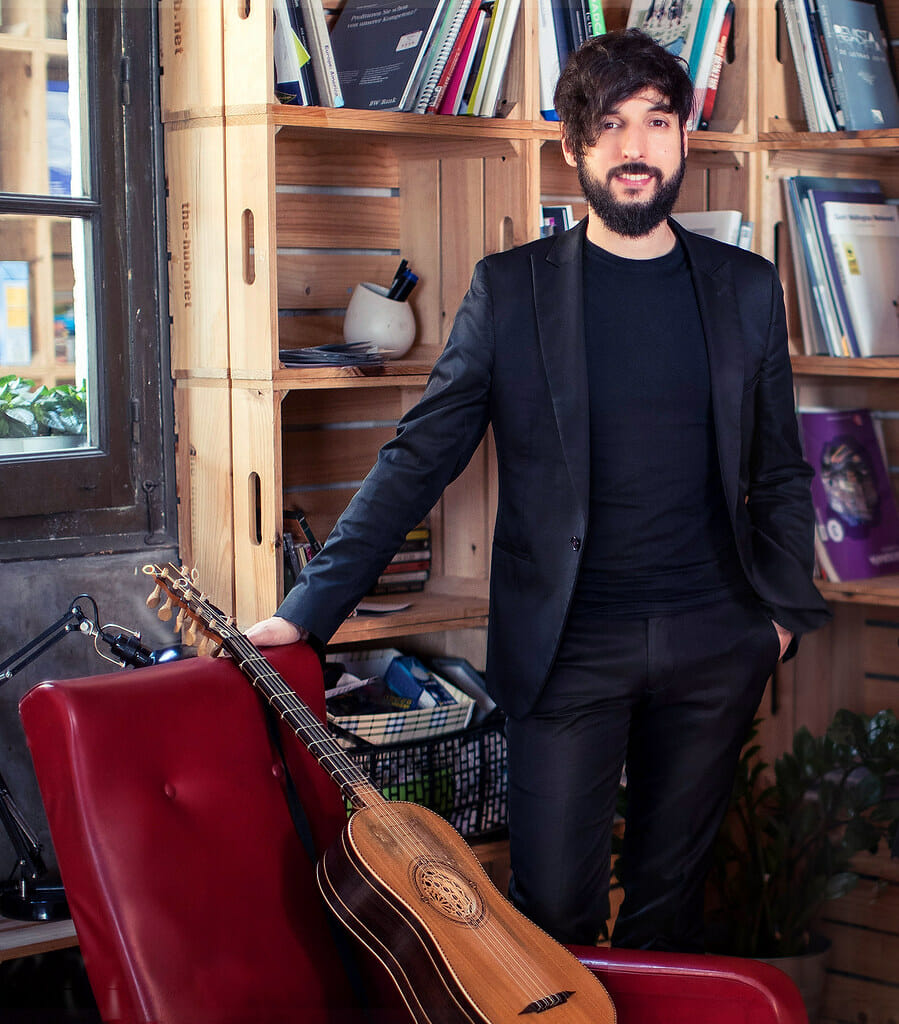 The CIBC teaching method ( Intensive Bass Course ) is articulated in four concepts: The rule of the eighth (according to Jean-François Dandrieu), the cadences, the progressions / sequences and the partimenti (according to Fedele Fenaroli and Giovanni Furno).
The complete CIBC currently consists of 30 units and is divided into two levels: “Level 1: Basic” (units 1 to 17) and “Level 2: Intermediate” (units 18 to 30).
The CIBC teaching method ( Intensive Bass Course ) is articulated in four concepts: The rule of the eighth (according to Jean-François Dandrieu), the cadences, the progressions / sequences and the partimenti (according to Fedele Fenaroli and Giovanni Furno).
The complete CIBC currently consists of 30 units and is divided into two levels: “Level 1: Basic” (units 1 to 17) and “Level 2: Intermediate” (units 18 to 30).
 Without furder ado, so we leave you with the interview, where we can find out more details about this initiative. We also share the two contact websites:
Without furder ado, so we leave you with the interview, where we can find out more details about this initiative. We also share the two contact websites:
 In these four years, seven more editions of Level 1: Basic and two of its extension, Level 2: Intermediate, followed one another.
Of this total of ten courses, two were in the framework of conservatory teacher training.
In these four years, seven more editions of Level 1: Basic and two of its extension, Level 2: Intermediate, followed one another.
Of this total of ten courses, two were in the framework of conservatory teacher training.
 It is such a progressive process that you hardly perceive how far you go. Each occasion, each instrument, each repertoire, each musician you accompany or share this task with create a unique and new language. It is an unlimited practice but this is precisely its greatest attraction.
But hey, speaking in more concrete terms, I confess that I approached the continuum with the baroque guitar using American cipher, which is much easier to read and seemed to me more than enough at the time. This would be around 1998, with 14 years.
I did not start working correctly with the figures until shortly before entering the Escola Superior de Música de Catalunya (ESMuC) in 2002 for my higher studies. Since then, which was already beginning to be in an almost professional way, the evolution of the accompanying instruments was baroque guitar, theorbo and, more recently, archilaúd.
Today I professionally combine the three according to the repertoire and the musical training. I still marvel at how each instrument causes me a specific and idiomatic type of performance for the same part. Logical that it was not written! It’s exciting and I really enjoy the personality of each instrument I use. My favorite? I think it is easy to guess.
It is such a progressive process that you hardly perceive how far you go. Each occasion, each instrument, each repertoire, each musician you accompany or share this task with create a unique and new language. It is an unlimited practice but this is precisely its greatest attraction.
But hey, speaking in more concrete terms, I confess that I approached the continuum with the baroque guitar using American cipher, which is much easier to read and seemed to me more than enough at the time. This would be around 1998, with 14 years.
I did not start working correctly with the figures until shortly before entering the Escola Superior de Música de Catalunya (ESMuC) in 2002 for my higher studies. Since then, which was already beginning to be in an almost professional way, the evolution of the accompanying instruments was baroque guitar, theorbo and, more recently, archilaúd.
Today I professionally combine the three according to the repertoire and the musical training. I still marvel at how each instrument causes me a specific and idiomatic type of performance for the same part. Logical that it was not written! It’s exciting and I really enjoy the personality of each instrument I use. My favorite? I think it is easy to guess.
 My goal is met when I get the student to assimilate this way of understanding the continuum and start with the skill of managing it with enough criteria to exercise later beyond my classes. It is obvious that knowing only the rules does not make you a good player, but at least you can start rehearsing.
Since basso continuo is an impromptu practice, organizing and systematizing your study is the first and greatest challenge you face. Where do I begin? How do I organize myself and how do I study it? My method is intended to be the answer to those questions. And as much or more, also for teachers who find ourselves in the arduous task of trying to teach it.
My goal is met when I get the student to assimilate this way of understanding the continuum and start with the skill of managing it with enough criteria to exercise later beyond my classes. It is obvious that knowing only the rules does not make you a good player, but at least you can start rehearsing.
Since basso continuo is an impromptu practice, organizing and systematizing your study is the first and greatest challenge you face. Where do I begin? How do I organize myself and how do I study it? My method is intended to be the answer to those questions. And as much or more, also for teachers who find ourselves in the arduous task of trying to teach it.
 I paid a lot of attention to the format of the books to learn languages and also to those of new technologies “for dummies”. Hence the idea of the intensive course. And boy is it! I think there is nothing similar or complete. That is why I have seen the need to do it.
In the presentation, I always anticipate some things that they will achieve at the end of the course and they do not give credit. The next day they find themselves doing it. Progress is incredible.
I paid a lot of attention to the format of the books to learn languages and also to those of new technologies “for dummies”. Hence the idea of the intensive course. And boy is it! I think there is nothing similar or complete. That is why I have seen the need to do it.
In the presentation, I always anticipate some things that they will achieve at the end of the course and they do not give credit. The next day they find themselves doing it. Progress is incredible.
 Until now, the usual average of enrolled students is always over twenty and although not everyone wants to play, we never lack instruments and volunteer instrumentalists to try our exercises. Your interventions are necessary for me to show you how you should study.
Until now, the usual average of enrolled students is always over twenty and although not everyone wants to play, we never lack instruments and volunteer instrumentalists to try our exercises. Your interventions are necessary for me to show you how you should study.
 The CIBC teaching method ( Intensive Bass Course ) is articulated in four concepts: The rule of the eighth (according to Jean-François Dandrieu), the cadences, the progressions / sequences and the partimenti (according to Fedele Fenaroli and Giovanni Furno).
The complete CIBC currently consists of 30 units and is divided into two levels: “Level 1: Basic” (units 1 to 17) and “Level 2: Intermediate” (units 18 to 30).
The CIBC teaching method ( Intensive Bass Course ) is articulated in four concepts: The rule of the eighth (according to Jean-François Dandrieu), the cadences, the progressions / sequences and the partimenti (according to Fedele Fenaroli and Giovanni Furno).
The complete CIBC currently consists of 30 units and is divided into two levels: “Level 1: Basic” (units 1 to 17) and “Level 2: Intermediate” (units 18 to 30).
 Without furder ado, so we leave you with the interview, where we can find out more details about this initiative. We also share the two contact websites:
Without furder ado, so we leave you with the interview, where we can find out more details about this initiative. We also share the two contact websites:
Pablo, how did you start teaching these intensive basso continuo courses? How many editions have you taught so far?Leaving regulated teaching aside, the first germ of these intensive courses dates back to July 2010, during the XIII Gijón International Festival of Ancient Music. In fact, it was my first experience as a basso continuo teacher. Two and a half years later, in November 2012, I would teach – without knowing it – what would be the zero edition of my CIBC during the International Seminar on Ancient Music in Albarracín, in Teruel. For that edition, still unnamed, I designed the twelve-hour schedule that is still the basis of my method today. However, what I consider to be the first edition did not take place until June 2013, at the Royal Conservatory of Music in Madrid. By then I was able to create the teaching material of more than 100 pages that attends the classes.
 In these four years, seven more editions of Level 1: Basic and two of its extension, Level 2: Intermediate, followed one another.
Of this total of ten courses, two were in the framework of conservatory teacher training.
In these four years, seven more editions of Level 1: Basic and two of its extension, Level 2: Intermediate, followed one another.
Of this total of ten courses, two were in the framework of conservatory teacher training.
How do you remember your first approach to basso continuo and how have you developed it in your professional career?I usually say that I do not know the day I started nor the day that I considered that I was already able to perform a basso continuo with ease, security and knowledge. Perhaps one can recall or fix in her memory that day when she first ventured into performing the encrypted bass, but I definitely doubt that anyone can recognize the day when she considered that “I already know how to do it.” In fact, if you have the spirit and the demand, you can always learn more.
 It is such a progressive process that you hardly perceive how far you go. Each occasion, each instrument, each repertoire, each musician you accompany or share this task with create a unique and new language. It is an unlimited practice but this is precisely its greatest attraction.
But hey, speaking in more concrete terms, I confess that I approached the continuum with the baroque guitar using American cipher, which is much easier to read and seemed to me more than enough at the time. This would be around 1998, with 14 years.
I did not start working correctly with the figures until shortly before entering the Escola Superior de Música de Catalunya (ESMuC) in 2002 for my higher studies. Since then, which was already beginning to be in an almost professional way, the evolution of the accompanying instruments was baroque guitar, theorbo and, more recently, archilaúd.
Today I professionally combine the three according to the repertoire and the musical training. I still marvel at how each instrument causes me a specific and idiomatic type of performance for the same part. Logical that it was not written! It’s exciting and I really enjoy the personality of each instrument I use. My favorite? I think it is easy to guess.
It is such a progressive process that you hardly perceive how far you go. Each occasion, each instrument, each repertoire, each musician you accompany or share this task with create a unique and new language. It is an unlimited practice but this is precisely its greatest attraction.
But hey, speaking in more concrete terms, I confess that I approached the continuum with the baroque guitar using American cipher, which is much easier to read and seemed to me more than enough at the time. This would be around 1998, with 14 years.
I did not start working correctly with the figures until shortly before entering the Escola Superior de Música de Catalunya (ESMuC) in 2002 for my higher studies. Since then, which was already beginning to be in an almost professional way, the evolution of the accompanying instruments was baroque guitar, theorbo and, more recently, archilaúd.
Today I professionally combine the three according to the repertoire and the musical training. I still marvel at how each instrument causes me a specific and idiomatic type of performance for the same part. Logical that it was not written! It’s exciting and I really enjoy the personality of each instrument I use. My favorite? I think it is easy to guess.
Pablo, can you explain what the objectives of the course are? What results can the students expect?There is an important theoretical content with which I try to understand the basso continuo as a true verbal language. A language with spelling rules and grammatical order in which there is no place for missing chords or meaningless harmonies. It can sometimes be a real complex network of unsuspected turns or continuous ellipsis, but always decipherable. If I compare it with chess, for example, it would be explaining the movements of the figures, the rules and the most common plays.
 My goal is met when I get the student to assimilate this way of understanding the continuum and start with the skill of managing it with enough criteria to exercise later beyond my classes. It is obvious that knowing only the rules does not make you a good player, but at least you can start rehearsing.
Since basso continuo is an impromptu practice, organizing and systematizing your study is the first and greatest challenge you face. Where do I begin? How do I organize myself and how do I study it? My method is intended to be the answer to those questions. And as much or more, also for teachers who find ourselves in the arduous task of trying to teach it.
My goal is met when I get the student to assimilate this way of understanding the continuum and start with the skill of managing it with enough criteria to exercise later beyond my classes. It is obvious that knowing only the rules does not make you a good player, but at least you can start rehearsing.
Since basso continuo is an impromptu practice, organizing and systematizing your study is the first and greatest challenge you face. Where do I begin? How do I organize myself and how do I study it? My method is intended to be the answer to those questions. And as much or more, also for teachers who find ourselves in the arduous task of trying to teach it.
Is the basso continuo course exclusively focused on early music?It comes from and is oriented to early music but many students confess to me that this harmonic language understood with so much coherence also serves them to understand other repertoires; clearly most of the later classical music, but even jazz or flamenco. The course is designed for modern society, where nobody has time for anything. We want immediate results and maximum efficiency.
 I paid a lot of attention to the format of the books to learn languages and also to those of new technologies “for dummies”. Hence the idea of the intensive course. And boy is it! I think there is nothing similar or complete. That is why I have seen the need to do it.
In the presentation, I always anticipate some things that they will achieve at the end of the course and they do not give credit. The next day they find themselves doing it. Progress is incredible.
I paid a lot of attention to the format of the books to learn languages and also to those of new technologies “for dummies”. Hence the idea of the intensive course. And boy is it! I think there is nothing similar or complete. That is why I have seen the need to do it.
In the presentation, I always anticipate some things that they will achieve at the end of the course and they do not give credit. The next day they find themselves doing it. Progress is incredible.
Do you recommend any previous experience for your students? Knowledge needed to take advantage of the course? Do you need to bring your own instrument?The only one that I usually recommend is the level equivalent to the third year of Professional Education of any specialty. At this point in musical training, students are already beginning to delve into counterpoint and harmonic analysis. So everything, at the CIBC I start from scratch but the theoretical level that we can look at goes deep into the programming of Higher Education. On the practical side, it is not essential to attend with an instrument. We do many exercises on paper, but we all try them on the harpsichord, on various plucked instruments, or by creating melodic instrument formations.
 Until now, the usual average of enrolled students is always over twenty and although not everyone wants to play, we never lack instruments and volunteer instrumentalists to try our exercises. Your interventions are necessary for me to show you how you should study.
Until now, the usual average of enrolled students is always over twenty and although not everyone wants to play, we never lack instruments and volunteer instrumentalists to try our exercises. Your interventions are necessary for me to show you how you should study.
Pablo, considering the importance of basso continuo in the plucked string (and other disciplines), do you think that this subject is sufficiently covered in the academic itinerary?I would say no. In my conservatory, for example, the CIEM “Federico Moreno Torroba” in Madrid, students begin their studies of basso continuo in the third year of Professional Education, just one year before tackling the subject of Chamber Music, which begin in fourth. We are trying to modify the study plan to extend (or at least advance) these studies by one or more courses. We are also demanding that different classes be created according to the degree and specialty being studied. In my center, the second criterion is respected, but the first is a real drawback because students who start with those who finish are brought together. On the other hand, beyond polyphonic instruments, the study of basso continuo as a baroque harmonic language should be an option – if not obligatory – for all melodic instruments; and not only from the Department of Ancient Music. It really is essential for everyone who wants to work on this repertoire.
With which plucked string instrument do you think it is easier to learn basso continuo?Without a doubt, with the key [laughs]. Just kidding, I understand that you are referring specifically to the lute or guitar family. Well, it is a difficult question to answer because with the instrument it is usually accompanied by a technical and idiomatic difficulty not yet resolved. The reality is that many times the need or desire arises for us to make chamber music –and therefore perform the basso continuo– before knowing the instrument well. Thus, the difficulty of learning a new language is combined with the difficulty of learning, in turn, a new instrument. If we could ignore this, I would say that the theorbo or the arch-lute allow a more logical and progressive approach to the realization of the basso continuo since they can follow the bass line. But in practice, many students agree and find it easier to start with the baroque guitar due to its tuning and not having as many strings or those basses as difficult to hit. Although, the continuum with the guitar is just the most peculiar of all plucked string instruments. Sometimes you have to give it a little imagination.
What next editions of the intensive course do you have planned?I was on March 25 and 26 at the Professional Conservatory of Music in Salamanca. The reception was great: 23 students enrolled and the spirit to continue next year with Level 2: Intermediate. Precisely, this second level will be the next appointment: the weekend of May 6 and 7 at the Professional Conservatory of Music in Zaragoza, where I was already teaching the first level last year. On the other hand, the ninth edition of CIBC 1 will take place at the II Early Music Aledo, in Murcia, which is held in July. The dates will be published very soon.
Do you plan to bring the format or content of the course to a written publication?Yes, of course. Last summer I started a much more complete version of all the teaching units, organized and revised precisely with a future book in mind. A didactic publication like the one I intend is requiring much more work than the material I use in class. In a breath I have doubled the number of pages of each level only leaving in writing what I say in words during the courses. Sometimes I have to set limits because otherwise it would be practically endless. The idea of getting to publish a definitive method of continuum that is essential in all conservatories and classes makes me fall in love but sadly I cannot attend to it as much as I would like. It is impossible for me to include it in my daily routine but I am very motivated waiting for the opportunity to give it a good push again. If all goes well, this summer I could go a lot further in the project again. My goal today is for the book to be available in early 2018. I have the encouragement of many people who are already waiting for you.
Thank you very much for your time Pablo and congratulations on the initiative.

